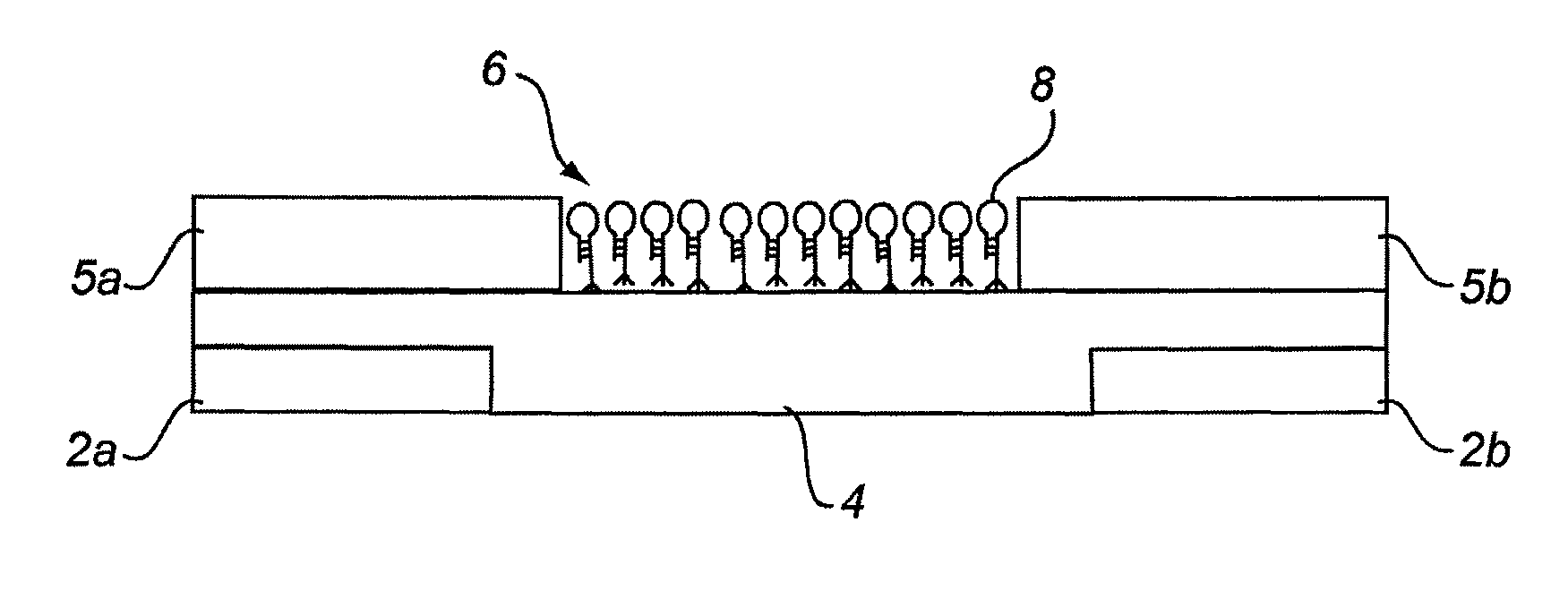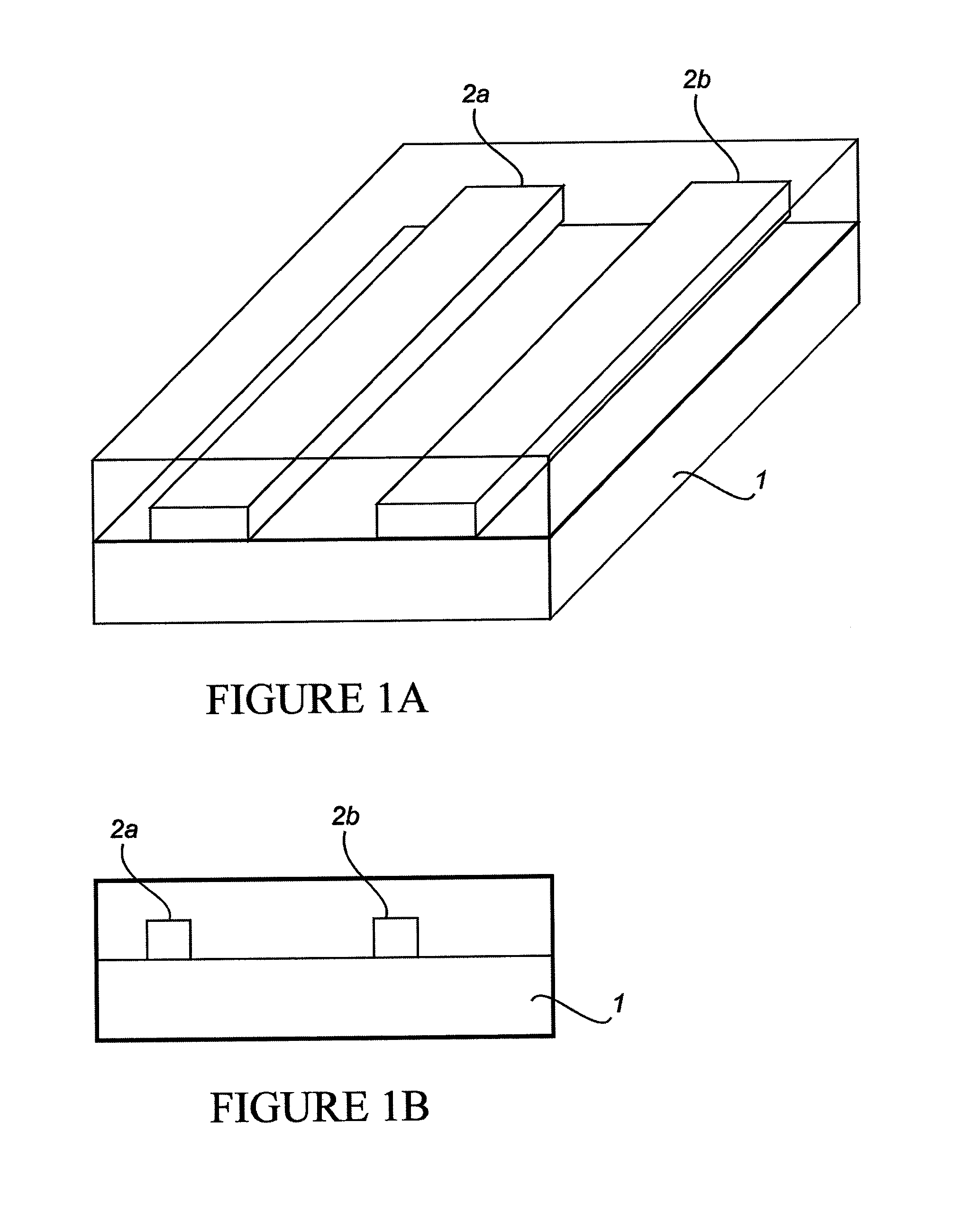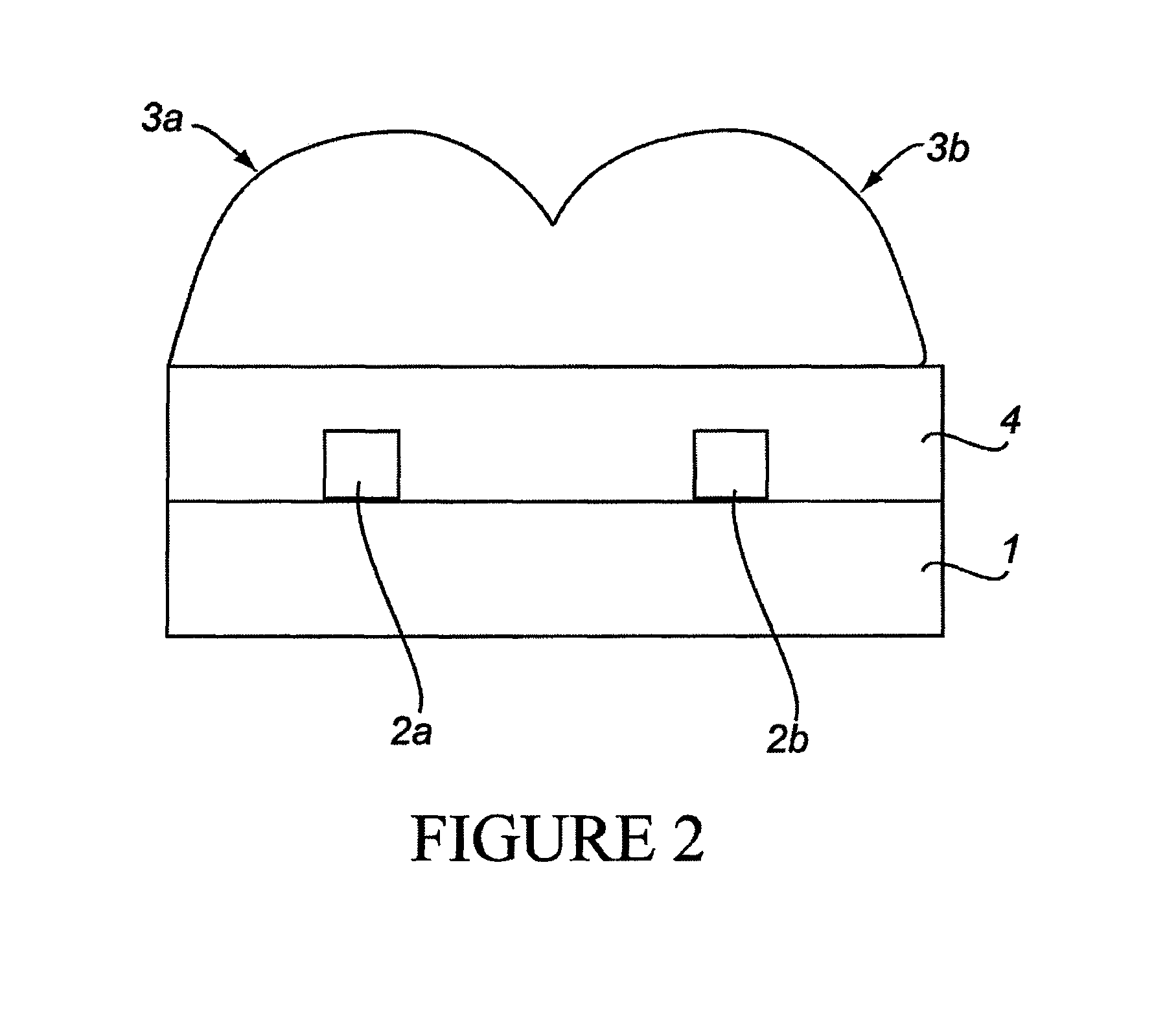Nano-scale biosensors
a biosensor and nano-scale technology, applied in the field of nano-scale biosensors, can solve the problems of weak interaction between the surface probe and the solution target, limited field-deployability or point-of-care capability of antibody-based molecular recognition, and unstable or destabilizing, etc., to achieve low power, stable, inexpensive, and sensitive electrical detection
- Summary
- Abstract
- Description
- Claims
- Application Information
AI Technical Summary
Benefits of technology
Problems solved by technology
Method used
Image
Examples
example 1
[0279]The “break junction” provides a way to interrogate electrical transport properties of molecules. Selective probe molecules are immobilized between the contact structures with nanometer sized separation. Break junction fabrication was used, including focused ion beam (FIB) “scratching” followed by electromigration, producing elegant, rapid and controlled high-yield nano-manufacturing of break junctions at exact locations with very narrow distribution of the gaps (between electrodes). FIB was used to introduce defects in a lithographically defined metal line by scratching the line surface at specific location. The scratch results in high resistance at that particular scratched part and induced electromigration results in a break at that exact location. Gaps ranging between 100-200 nm have been reproducibly prepared. The break junctions are then functionalized with RNA aptamer molecules and are used to detect an important cancer biomarker Epidermal Growth Factor Receptor (EGFR). ...
example 2
A. Materials
[0285]The chemicals used were 3′-aminopropyltrimethoxy-silane (APTMS); 1,4-phenylene diisothiocyanate (PDITC); N,N-dimethylformamide (DMF); 1,2-dichloroethane; N,N-diisopropylethylamine (DPEA); 6-amino-1-hexanol; and methanol. Autoclaved deionized water (DIW) was used to make the buffer solutions. The chemicals were purchased from Sigma-Aldrich (Saint Louis, Mo.). The 3′-amino modified DNA strands were purchased from Alpha DNA (Montreal, Quebec). The DNA binding domain from the Bombyx mori retrotransposon protein R2Bm was prepared. The zinc finger and myb motif of the R2Bm protein binds to a specific dsDNA sequence (5′-CTTAAGGTAGCAAATGCCTCGTC-3′) (SEQ ID NO: 6) within the gene coding for the large ribosomal subunit.
B. Method
[0286]The reported work consists of three major parts that were carried out in parallel: a) Fabrication of the CMOS chip; b) SiO2 surface preparation, modification and attachment of dsDNA on the Chip; c) Binding between protein and DNA and optical / ele...
example 3
Materials and Methods
A. Materials
[0304]All chemicals were obtained from Sigma-Aldrich (St. Louis, Mo.) unless otherwise noted.
B. Aptamer Preparation
[0305]The anti-EGFR modified RNA aptamer was isolated by iteratively selecting binding species against purified human EGFR from a pool that spanned a 62 nucleotide random region. A high affinity (Kd=2.4 nM) anti-EGFR aptamer and a non-functional, scrambled counterpart were extended with a capture sequence. The capture sequence did not disrupt aptamer structures but was used as a hybridization handle for binding with probes immobilized on surface.
[0306]The sequences for the extended anti-EGFR aptamer, mutant aptamer, and relevant capture oligonucleotides were: anti-EGFR aptamer (5′-GGC GCU CCG ACC UUA GUC UCU GUG CCG CUA UAA UGC ACG GAU UUA AUC GCC GUA GAA AAG CAU GUC AAA GCC GGA ACC GUG UAG CAC AGC AGA GAA UUA AAU GCC CGC CAU GAC CAG-3′) (SEQ ID NO: 1); mutant aptamer (5′-GGC GCU CCG ACC UUA GUC UCU GUU CCC ACA UCA UGC ACA AGG ACA AUU CU...
PUM
| Property | Measurement | Unit |
|---|---|---|
| time | aaaaa | aaaaa |
| current | aaaaa | aaaaa |
| time | aaaaa | aaaaa |
Abstract
Description
Claims
Application Information
 Login to View More
Login to View More - R&D
- Intellectual Property
- Life Sciences
- Materials
- Tech Scout
- Unparalleled Data Quality
- Higher Quality Content
- 60% Fewer Hallucinations
Browse by: Latest US Patents, China's latest patents, Technical Efficacy Thesaurus, Application Domain, Technology Topic, Popular Technical Reports.
© 2025 PatSnap. All rights reserved.Legal|Privacy policy|Modern Slavery Act Transparency Statement|Sitemap|About US| Contact US: help@patsnap.com



